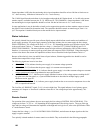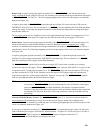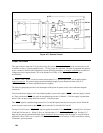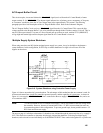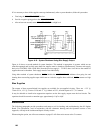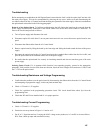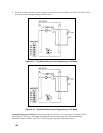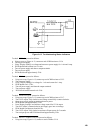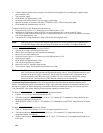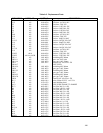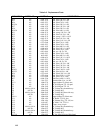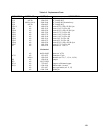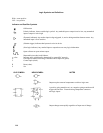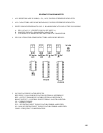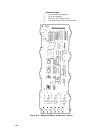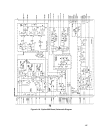
110
b. Connect output terminals of power supply to an electronic load capable of exceed the power supplies output
power rating by 50%.
c.
Turn on power supply.
d.
DVM should read approximately 5Vdc.
e.
Set voltage and current controls of power supply to maximum.
f.
Decrease resistance of electronic load until "UNREGULATED" LED on front panel lights.
a.
DVM should now read between 0 to 0.4Vdc.
To check LOW BIAS or AC Dropout proceed as follows:
a.
Using test set-up, Figure A-13, connect top end of 2KΩ resistor to J3-19.
b.
Substitute an oscilloscope in place of DVM. Set vertical deflection for 1 volt/div on the DC input.
c.
Turn power on and observe oscilloscope trace. Voltage should increase to 5V at power-on and drop to between
0 to 0.4Vac approximately 3 sec.
d.
Turn power off. Voltage should go to about 5Vdc before decaying back to 0V.
Note In this test, the Low BIAS or AC Dropout signal decays to 0V only because of loss of power to the +
5V REG Bias Supply used in the test set-up. If in doubt, use an external + 5V supply for this test.
To check ATUREOVERTEMPER proceed as follows:
a.
Turn off power supply and disconnect line cord.
b.
Wait at least two minutes for input capacitors to discharge .
c.
Remove top cover and inside cover.
d.
Using test set-up, Figure A-13, connect top end of 2KΩ resistor to J3-16.
e.
Turn on power supply.
f.
DVM should read approximately 5Vdc.
g.
Turn off power and wait two minutes.
h.
Remove the A4 FET Assembly from the unit.
i.
Turn on power supply. DVM should read between 0 to 0.4Vdc.
Note The FET heatsinks are connected to the primary circuit and hazardous voltage (up to between 300 to
400V) exists between the heatsinks and the heatsink and the chassis. These potentials remain for up to
2 minutes if the power supply is turned off. Do not touch the heatsinks or any components on the
heatsink assemblies while the power supply is turned on or for at least two minutes after primary
power is removed. Do not place any of the heatsink assemblies on extender boards.
Troubleshooting Remote Shutdown. The following procedures check the Remote Shutdown features of 002
Option. Troubleshooting can be accomplished by using a logic probe and referring to the schematic and the circuit
description on page 104. Before attempting to troubleshoot the Remote Shutdown section of the option, check for +
5Vdc internal bias. This voltage must be present for proper operation of these circuits
To check the
TRIP REMOTE and RESET REMOTE proceed as follows:
a.
Connect +5V (J3-23) to Control Isolator bias (J3-l0).
b.
Turn unit on and short TRIP REMOTE (J3-30) to + 5V common (J3-7) momentarily. Output should go into
unregulated condition with output off.
c.
Short REMOTE RESET (J3-29) to + 5V common (J3-7) momentarily and OUTPUT should return to its initial
state.
To check
INHIBIT REMOTE proceed as follows:
a.
Table A-3. Replacement Connect +5V (J3-23) to control isolator bias (J3-10).
b.
Turn unit on and short INHIBIT REMOTE (J3-31 ) to + 5V common (J3-7). Output should go to an
unregulated output off condition.
c.
Remove short between INHIBIT REMOTE (J3-31 ) and + 5V common (J3-7) and output should return to its
initial state.



